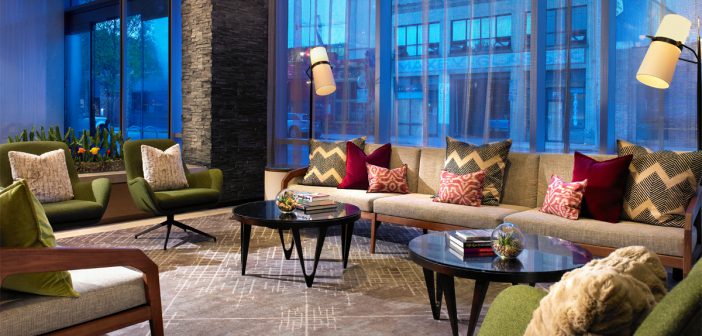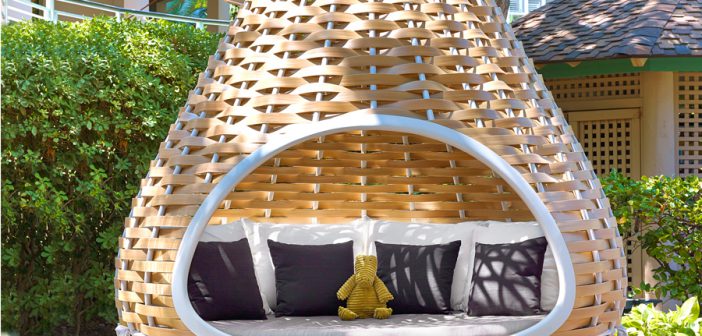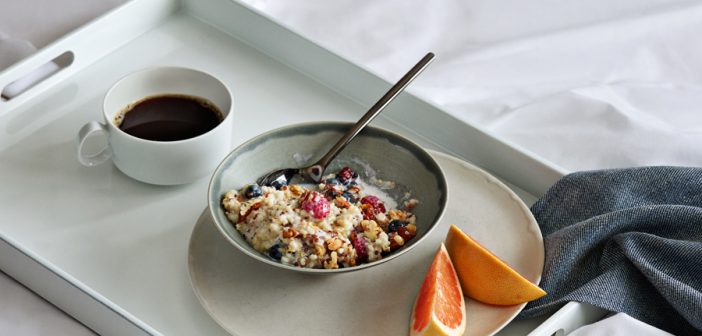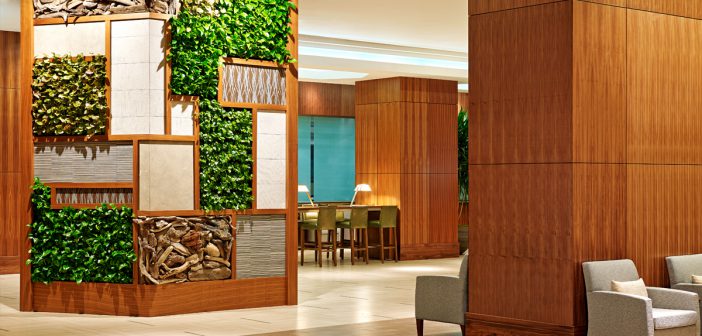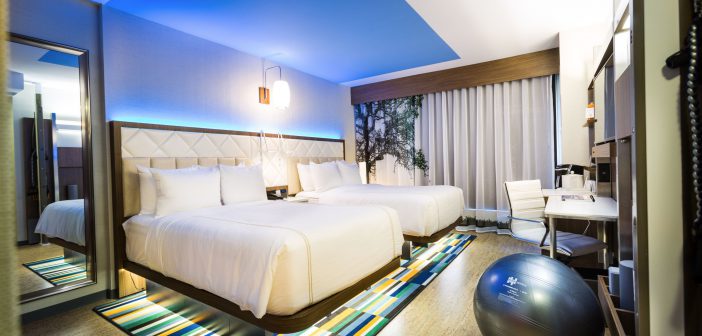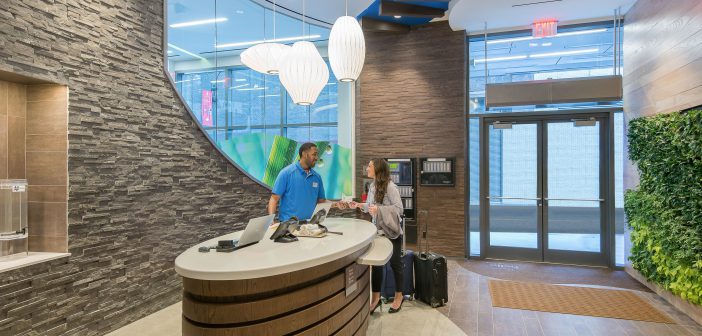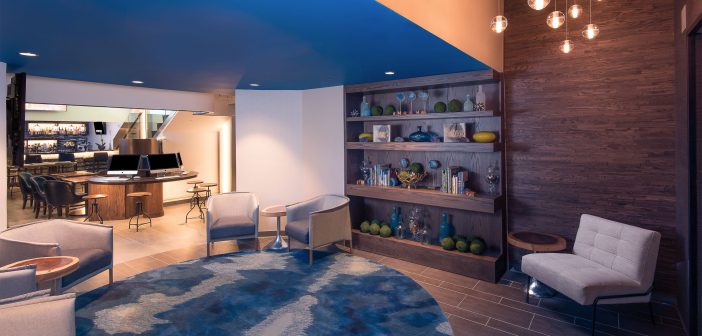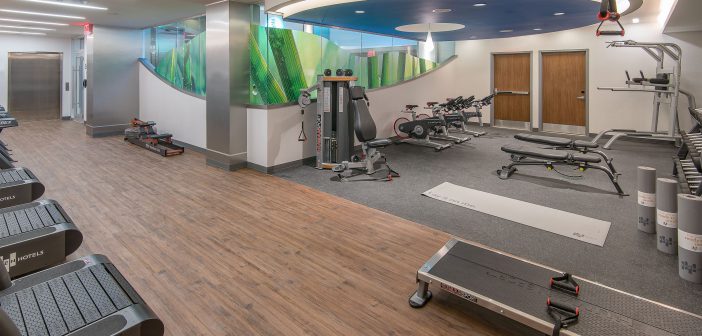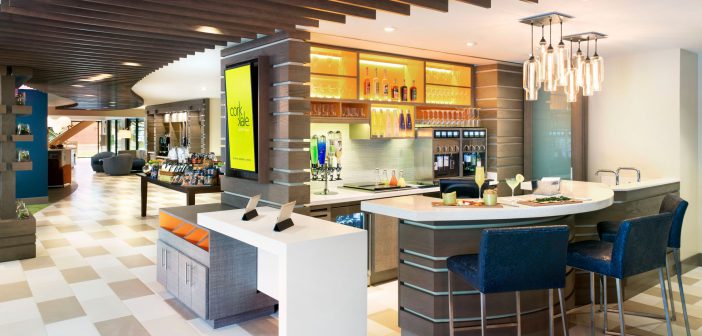From IHG’s wellness‑centered EVEN Hotels to Westin’s longstanding commitment to guests’ health, there’s a lot to learn from the industry’s big names in wellness.
by Michele Keith
The wellness movement and all it entails – exercise, nutritious foods and a healthful environment – was once considered to be a craze. It is now thought of by many as a way of life. Such a large part of our lives, not only has wellness moved into the workplace, it has followed us into hotels and on vacations so our healthy routines need never be interrupted, and perhaps even improved, when not at home.
We spoke to two industry leaders to reap the benefits of their hard‑earned wisdom. InterContinental Hotels Group (IHG) created the EVEN Hotels brand, which provides, as they say, “Wellness Your Way” with a panoply of interconnected programs to help wellness‑minded travelers keep their balance on the road; and Westin Hotels & Resorts whose “For a Better You” philosophy touts ‘Sleep Well, Eat Well, Move Well, Feel Well, Work Well and Play Well’ as the pillars of a healthy, happy life.
Very different one from another – EVEN Hotels, created from scratch to address the wellness movement, and Westin, incorporating a host of wellness programs and partnerships while retaining its luxurious edge – both brands can teach us a great deal.
Consider incorporating a few of their ideas into your hotel’s design as time and money permit. As the saying goes, “A journey of a thousand miles begins with a single step,” and there’s no better way to join the wellness movement.
Wellness in travel is big business
“The wellness market,” says Sarah Lipton, director, global brand management, Westin Hotels & Resorts, “is valued at $3.4 trillion globally with nearly 300 million wellness consumers worldwide.”
Jason Moskal, vice president, lifestyle brands, IHG, The Americas, adds, “Our studies showed that there are 17 million wellness‑minded travelers who find it hard to stay active and eat right and often ‘fall off the wagon’ when they travel.”
If that doesn’t make you stop and think, consider the Global Wellness Institute’s (GWI) figures for the 10 sectors comprising the global wellness market: beauty and anti‑aging ($1.03 trillion), healthy eating/nutrition/weight loss ($574 billion), fitness and mind‑body ($446 billion), wellness tourism ($494 billion), preventative/personalized health ($433 billion), complementary/alternative medicine ($187 billion), wellness lifestyle real estate ($100 billion), spa industry ($94 billion), thermal/mineral springs ($50 billion) and workplace wellness ($41 billion). Wellness in all its guises is definitely top of mind for many.
A bit of history
Lipton says Westin is “rooted in wellness, dating back to the game‑changing debut of the Heavenly Bed more than 15 years ago.” This allowed the brand to make a mark in the tourism and hospitality industry as “the premier brand, truly committed to helping guests get a good night’s sleep.”
From that small beginning, she says, “We examined our brand experience holistically and rooted it with a strong identity that allowed us to ‘own’ wellness in hospitality.”
At a time when most hotel gyms were an afterthought and consumers were only just beginning to look at the labeling of organic products, Westin evolved with the growing demand for well‑being “and has pivoted from a position of renewal to one of well‑being that touches guests before, during and after their stay… while also incorporating its commitment to well‑being into our corporate culture,” Lipton says.
As for mid‑priced chain EVEN Hotels, it was two years of research that instigated its development. “What we discovered,” says Moskal, “was that there were four main areas that drove consumer needs for wellness: productivity, nutrition, fitness and relaxation. We built the brand from the ground up based around those four dimensions, emphasizing ‘Eating Well, Resting Easy, Keeping Active and Accomplishing More.’”
Following the announcement of EVEN Hotels in 2012, its first two properties opened in June 2014, in Norwalk, Conn., and Rockville, Md. A third, in midtown Manhattan, N.Y., appeared in November 2015. And five more are currently on the drawing board.
Its mission is to serve as a travel partner, “inspiring our guests to stay on track when they are on the road,” as Adam Glickman, head of EVEN Hotels, says, “and helping guests feel better about their experience and themselves based on the choices they are able to make, even to help guests get healthier by the end of their stay.”
The wellness customer
Neither Lipton nor Moskal pigeon‑hole their guests as millennials, but according to Part II of the State of Wellness Travel Report released in March 2016 by Spafinder, Wellness 365, “Every wellness‑minded element at properties – from healthy food to fitness classes to spiritual healing – ranked as more important for younger travelers (49 and under) than for baby boomers (50 and older).”
With millennials numbering about 75.4 million and gen xers at 66 million according to the Pew Research Center, one can see why hotels would want to please them. Growing up exercising, endeavoring to eat right, they don’t want to leave their healthy lifestyles at home when they’re on the road. Their bosses are listening to them too, and more and more are giving them what they want when they’re on the road for business.
On the other hand, Kevin Williams, vice president of distribution, TravelWorm, suggests one not disregard baby boomers. “An active generation both mentally and physically – keep in mind this is the generation that released a fitness craze (Jane Fonda aerobics) as well as many social and ideological movements. They are the ‘can‑do’ generation and feel they can truly accomplish anything. Boomers tend to think of themselves as ‘forever young.’”
Wellness that works
Lipton believes that the holistic approach, being partners in their guests’ and associates’ well‑being, “seems to be resonating.” The proof she shares: “Across the upper‑upscale segment, new hotel deals for Westin’s global portfolio growth were up 38 percent over 2014. Westin has gained more than six points of market share since 2010, and is commanding a $20+ revenue per available room (RevPAR) premium over the competition.”
Two programs she has seen grow and evolve successfully in the last five years, obviously influencing such figures, are RunWESTIN with its nearly 200 Run Concierges who host group runs for guests, and Gear Lending, which offers New Balance shoes and clothing for guests to borrow during their stay. Their latest partnership is with FitStar by Fitbit, “which gives guests the opportunity to take their workout beyond their hotel stay with different apps.”
It goes without saying that nutritious, delicious food is another Westin hallmark. Among a variety of initiatives, The Sleep Well menu was created with SuperFoods Rx to promote rest and recovery; and they worked with The Partnership for a Healthier America (PHA), chaired by Michelle Obama, to make the healthy choice the easy choice at their hotels and resorts.
Emphasizing balance in wellness (the basis of the brand’s name) underscored with the belief that “Wellness isn’t one‑size‑fits‑all,” as Glickman says, EVEN Hotels says it gives guests what they want: choices. This includes public work spaces; sit‑and‑stay or grab‑and‑go customizable food and menus featuring organic and natural dishes, including a key to decipher particulars such as protein content; exercise options ranging from In‑Room Training Zones stocked with everything from an exercise ball to eight‑foot tall trainer, to well‑equipped gyms; rooms featuring ergonomically sound desks; and, glomming on to many guests’ desire to “do good,” the knowledge that for every bottle of organic liquor purchased, a tree is planted. In Moskal’s words, wellness is “embedded in everything we do.”
What wellness looks like
Wellness most assuredly informs Westin’s design aesthetic. According to Lipton, it incorporates biophilic design, which dovetails with the hotel’s idea that “people have an innate need to connect with nature, and that our link to the natural world affects our well‑being.”
This translates into natural materials, elements and patterns that evoke nature‑focused imagery. “It’s applied to all spaces,” she says, “from the lobby to meeting rooms to guestrooms, and includes atmospheric lighting and music, and in the redesigned lobbies vertical gardens promote air quality while adding another natural element.”
Not leaving any detail to chance, the hotel does things such as angle beds asymmetrically so as to “create a meandering path that is reflective of nature and evokes the feeling of a more open space.” In March a new visual identity was unveiled, made up of a palette of bold yet natural shades – zest, granite, mint, terra‑cotta, flax and basil – punched up with lifestyle photography and a more energetic tone, communicating a “more active voice and sophisticated look that connects with our target demographic… relatable, aspirational and appealing,” as Lipton says.
EVEN Hotels has been equally diligent in researching guests’ desires in their accommodations. One area of focus they found centers around the importance of sleep. According to Moskal, “When you’re happier you sleep better. Regular physical activity can help you fall asleep faster and deepen your sleep… it also affects your emotional regulation.” In response, the hotel teams in‑room fitness options with restful environments that offer such amenities as natural bath products and eucalyptus‑fiber bed linens.
As to décor, wood and rock dominate in interesting, contemporary ways – picture rocks gathered in wire cages to form space dividers, a wall of plants in the reception area, and a range of wood from blonde to gray to dark brown, sparked with accessories patterned in green, blue and orange.
Top trends
“We have seen a spike in travelers among all demographics who would willingly pay a premium for locally sourced food and to stay fit on the road,” says Lipton. Key among them are families, for whom they launched a program geared especially toward them that includes the Kids’ Club concept.
Honeymooners are another group that has changed greatly over the years. Rather than two weeks lolling on the beach, umbrella drink in hand, Westin’s poll of 4,000 people throughout North America from this past spring revealed that the focus is now on activities such as skiing, hiking and running. To make it easier for them to do this, the hotel offers a honeymoon registry program, which allows family and friends to gift active excursions for its couples.
“Mindfulness” is what Moskal sees as important going forward. “Guests are looking for places to be mindful both within and outside their guestroom when they travel. We’re supporting this trend through the use of color‑changing mood lights, scent therapy in our lobbies and outdoor spaces. Guests want to immerse themselves in things that help clear the mind and take them out of their element, for example, by playing games such as such as table tennis, offered in its own space in our Times Square South, New York City, location.”
Wellness‑in‑travel is not a trend, not a fad, not for a pampered fraction of the population. It’s for everyone. Everywhere. Now.
EASY WAYS TO WEAVE WELLNESS INTO YOUR HOTEL
- Host happy hour in the lobby with a variety of fresh juices, as well as organic wines. Profitable for you, fun for guests.
- Coordinate with the local Chamber of Commerce to provide maps and brochures – printed and online – of nearby places of interest including hiking trails, boating lakes, and farm‑to‑table, organic or otherwise healthy restaurants.
- Give your workout room’s bathroom/changing area the look of a spa with a soft blue or green color palette, wood benches and grab‑and‑go water for easy hydration.
- Offer fruit‑infused water, and cooled/heated rolled towels at the check‑in desk.
- Provide access to workout videos that can be used in guest rooms, including those for yoga, meditation, strength training, stretching, as well as educational info such as beating jet lag, juicing and good nutrition.
- Stock in‑room mini fridges and your hotel pantry store with a good selection of healthy snacks, meals, and protein drinks and bars.
- Offer loaner bicycles and helmets to encourage guests to explore your city.
- Use signage to designate clear smoking areas and keep other guest spaces completely smoke‑free.
- Add natural touches in rooms and in the lobby, including organic cotton bedspreads and shams, sisal area rugs and framed black‑and‑white photographs.

